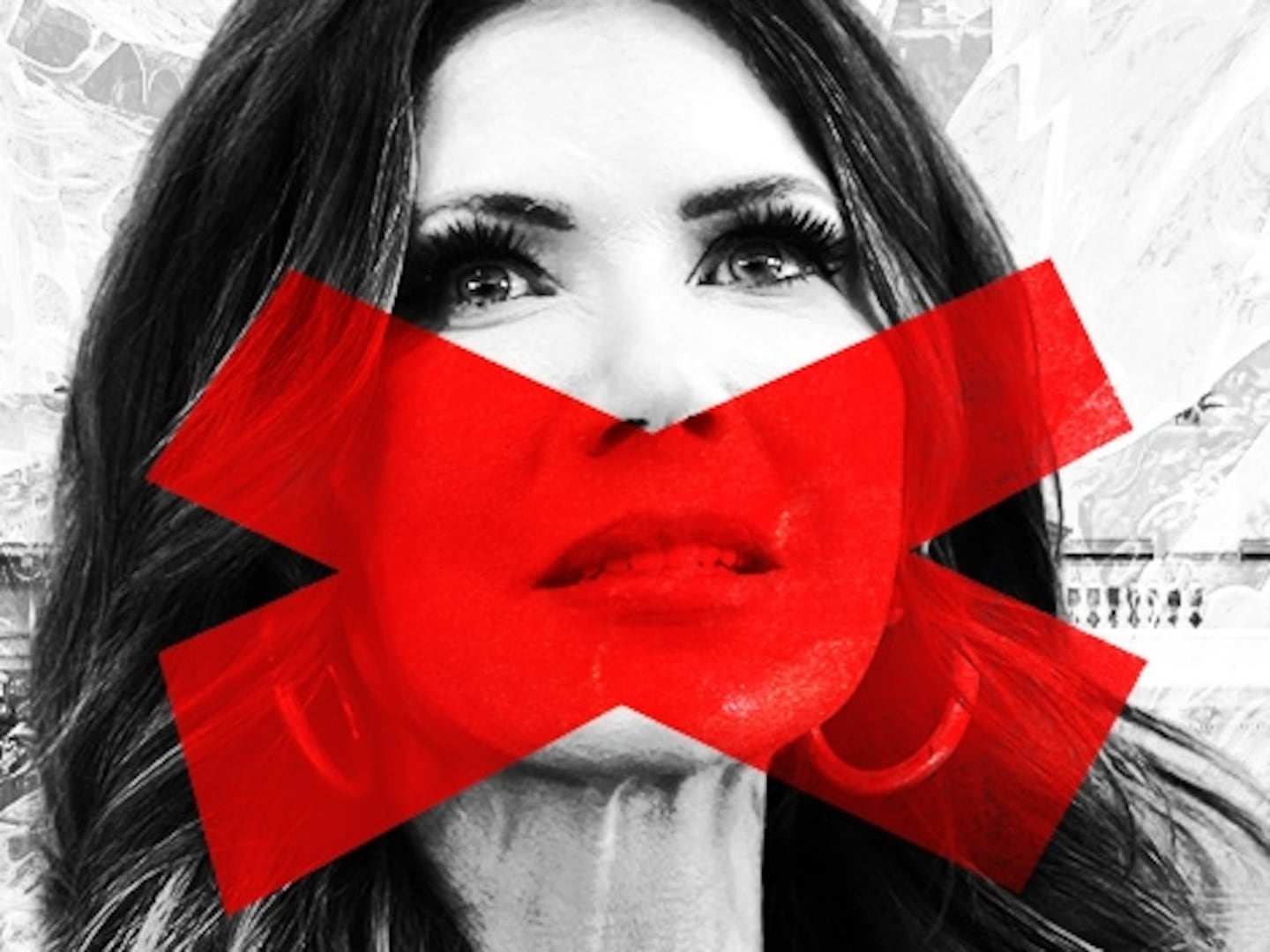Black storm clouds have just crept across the Hudson, blanketing Manhattan in shadow. The rain is pouring down so hard it’s almost biblical, culminating in an ambience straight from a horror film.
How fitting, then, to be talking to Robert Eggers and Anya Taylor-Joy, the director and star of The Witch, the most horrifying film to terrorize—and, in turn, delight—viewers in a decade. “It is perfect,” Eggers says, laughing, glancing out the window at the precipitating mayhem. "It’s cool!" Taylor-Joy laughs, leaning forward to score the ominous scene: “Dunh dunh dunh.”
It’s almost unsettling to see the young actress be so playful and bubbly. For the hour-and-a-half running time of The Witch, a somber, serious Taylor-Joy crafts a character that chills you to your core.
Since premiering at Sundance last year, there’s been much buildup to the release of The Witch, which has been branded “the scariest movie in years” and ruled “pure horror movie perfection” by critics. Stephen King (who knows a thing or two about the genre), said the movie “scared the hell out of me.”
“It took four years to find investors who wanted to make a movie in early modern English,” Eggers tells me. “To have this reaction is really overwhelming. I thank the zeitgeist for being witchy right now.”
The Witch is a film that, on paper, shouldn’t be in the zeitgeist at all.
Set in 17th century Puritanical New England, it follows a family that has been cast out from their plantation commune. Isolated in a dank, unforgiving, aggressively gray clearing on the edge of the woods, their lonely, self-sufficient struggle combines with their extreme piety to birth a black-magic paranoia that slowly begins to destroy them.
In a terrifying sequence, Thomasin, the family's eldest child, played by Taylor-Joy, is playing peek-a-boo with her newborn brother. She covers her eyes and when she reopens them, he has disappeared.
In an attempt to find blame, the family, crushed under their own fire-and-brimstone fear of sin, devolve into a slow-burn hysteria. As crops start failing, objects start disappearing, and the family’s other children begin to exhibit odd behavior, their paranoia gives way to a conclusion: This all must be the work of a witch. And that witch may be Thomasin.
Eggers spent nearly five years researching the time period, its folklore, Puritan beliefs, and, of course, its accounts of witchcraft. This was before the Salem witch trials, a time when religious settlers were victims of their own zealotry, truly believing that darkness was the work of witchery.
The Witch’s greatest accomplishment is the fruits of Eggers’s years of labor: a painstaking re-creation of life at the time that makes the witch hunt feel hauntingly real. Everything from the boning in the female characters’ corsets to the clapboards that were built are true to period. That includes the dialogue, too—much of it is taken directly from the primary sources Eggers came upon in his research.
The result isn’t so much the “horror” film we’ve all been sold in marketing, but a psychodrama that trades on the characters’ desperation and lonely anxiety—not to mention fear of their titular neighbor in the woods—to create a visceral, crushing sense of dread.
Sure, we get glimpses of witches, and they are terrifying and gruesome. A wrinkled hag grinds the stolen infant with mortar and pestle, and spreads the fruit of her labor on her body as if it’s a lotion, and a possessed goat lurks like a proper horror movie monster. But this is not a film that frightens with a “boo,” but instead by twisting its haunting plausibility into your head with Eggers’s meticulous verisimilitude.
As The Daily Beast’s Jen Yamato wrote after seeing the film at Sundance, “Think The Crucible meets The Shining, seen through the eyes of a teenage girl wrestling to resolve her rigid religious upbringing with her burgeoning sexuality.”
It’s a project that flourishes from its creators’ lifelong obsessions with the occult. So with the film finally in theaters after a year of buildup following its Sundance debut, we spoke with Eggers and Taylor-Joy about the witchy zeitgeist, the secret to the film’s scares, and the feminist power of The Witch.
Why do you think the zeitgeist is witchy right now? What is about this time in culture?
Eggers: My answer is going to make me sound like a New Age crystal worshipping weirdo.
Taylor-Joy: I actually am a crazy crystal person, so…
Eggers: But check it out, man. The Bushwick witches and everything else.
Taylor-Joy: I remember being on set and overhearing a conversation [from members of the crew]. They were talking about, “Oh, zombies are really big right now!” and they were trying to get me to watch The Walking Dead. And we were like, “Zombies are big now, vampires were big a while ago, oh…this is exciting.” We’re making a witch movie. That’s kind of cool.
Eggers: But I actually think it’s bigger than just “Witches are the new vampires.” I think there’s a cultural…something.
Taylor-Joy: Totally.
Does being so entrenched in a character who becomes concerned herself that she may be a witch change your own feelings on witchcraft?
Taylor-Joy: Strangely enough it didn’t change it that much because as a kid and now, I really believe in magic. I love magic. As a kid I would run into the woods and try to find witches and be like, “Yo, I’d like to join you.” There are magic moments you get as an actor where you react to something so strongly that you feel it in your body. There were a couple of lines throwing the word “witch” around where I literally was like “Whoa, that’s what that means.”
Being called a witch while filming actually had a visceral effect on you?
Taylor-Joy: Rob and I talk about it all the time. “The witch” wasn’t just the way of getting rid of someone. Like if you didn’t you like an outspoken woman. They really did believe that and it really was a death sentence. It’s frightening. That was amazing to be able to feel and also kind of harrowing because, wow, this actually happened to a lot of innocent women. That was a bit of a shocker.
So many of us are first introduced to these ideas learning about the Salem Witch Trials in school. But I remember never really being able to grasp what was going on. It all seemed like lunacy, thinking that people were witches. This film, I feel like, makes that paranoia finally make sense.
Eggers: That’s great. Bless you. We had a screening for some historians who said that it was really powerful to see things that they were writing about acted in this way, and see it played out on a real human level instead of in their imagination. It did seem like lunacy to me too. I couldn’t wrap my head around it as a kid. But in fact the subconscious fear of female power was so extreme that they literally believed these women were fairy tale witches. That realization made this an exciting project because the ramifications of the idea of the evil witch, it goes through time. We’re still dealing with it today.
There is striking relevance. Like you said, the fear of female power. The witch hunt.
Eggers: Claiming female power as a cultural consciousness, today we’re still working on it.
Taylor-Joy: That sort of ties into what I was saying about the vampires and the zombies. It’s actually a bigger issue than that. The word “witch” in those days was such an ugly word. It’s not even an ugly word. It’s a death sentence. It’s not calling someone stupid or something like that. There’s a sort of element right now, there’s still a really long way to go, but feminism is at least being talked about and it’s a wonderful message of owning your power—that sort of thing.
Eggers: Of course, the irony in this film, the witches are evil. They are as people saw them. But I think you can see those things still. Feminist issues—I wasn’t trying to make this film with any of intention or message. I wasn’t trying to make a feminist film. But it was clearly bursting out of all these texts that I was reading and creating this story it happened. Because that’s what it’s all about.
Everyone keeps calling this a horror film. But you’ve said you actually think of it as more of a fairy tale.
Eggers: Yeah. It’s a horror film as much as anything is a horror film. But for me, these pre-Disney fairy tales that aren’t moralistic and aren’t simplistic and have darkness and enigma—these are powerful. These are things that will last. One of my favorite things about these pre-Disney fairy tales is that, among other things, they’re almost mythic in the ways they subconsciously explore complicated family dynamics. The family drama is the most interesting drama and it’s how we kind of deal with all of our relationships, all of our lives. In Grimm fairy tales, often the evil stepmother witch character is the biological mother. That’s interesting stuff.
There are certainly horror elements, though. I mean, those witches are horrifying as hell when you see them. Because of that I could see there being a temptation to scare with them all the time and turn this into a monster movie. Why did you feel it was important not to do that?
Eggers: There are a lot of reasons that are all connected. The thing is that when you see supernatural things played out in a super-heightened way really explicitly, you can only be aware of artifice. So the more restraint and the more that you hold back and the more that it’s things that could somehow in our contemporary brain be rationalized scientifically, we can almost believe in the supernatural more as an audience.
You need to be able to believe that this is real.
Eggers: Also, monsters have their power in the shadow, in darkness, in the things you’re imagining and can’t see. If you bring it to light, whatever. Alien is one of my favorite horror movies, if it’s a horror movie. The way we just see glimpses of that alien really works. I’m always disappointed that after it goes out the airlock in one of the last shots of the film, we see the whole body and the rubber suit in that light. You’re like, “Ah it’s a rubber suit.” The rest of the movie doesn’t do that. Hopefully that dissatisfaction I feel about Alien, people don’t feel about my film.
Taylor-Joy: Your imagination is always scarier, right?
Eggers: I mean I can’t look into your soul and find out what scares you the most. So I work as hard as I can with my imagery and then hold back so you can finish it. That’s the idea.
It must be nice that so much recognition is being paid to the attention to detail you had in dressing the set. Did I read that you even flew in a tree to make it look more authentically New England? (The movie was filmed in Ontario.)
Taylor-Joy: One tree.
Eggers: It was really hard to find a white pine in a hemlock forest, but we didn’t end up flying more in. But the clapboards, the house, and the out buildings, those are a vernacular architectural tradition that doesn’t exist in northern Ontario. And the thatching as well is not part of the traditions, so we had to get people who work on first-period houses and museum re-creations in Massachusetts and Virginia to do that stuff for us.
When you were insisting on this attention to detail did anyone call you crazy?
Eggers: I mean, yeah. But once I found my investors, they got what I was trying to do so they really supported it. Any line producer who is good at their job is going to push back at every single one of those choices. And they need to. But I had my team supporting me and they understood why it mattered. I will say it wasn’t just like I was being irresponsible. The production designer was so compromising, but let me tell you, we spent so many discussions on how to fake the clapboards. He was looking at all different ways to try and fake it and ultimately you can’t. You can’t fake it. That’s why we did it that way.
The authenticity, though, is the reason it all is so scary.
Taylor-Joy: Rob did an incredible job and, honestly, how lucky are we that’s how we get to act? He created our world. All the clothes. The house. It’s all so authentic and real that in reality we’d just turn up and be like, “We are fully invested in playing pretend, because it doesn’t feel like pretend.”
Eggers: I do want to note though that the pockets weren’t in your clothes back in the day. They were exterior. The pouches they carry were called pockets. OK. So I made sure to work with props to make sure that the things in their pockets were the accurate tools and bits and bobs that they would have so they’d really feel it. But by week two they’d all be carrying, like, cigarettes around in it.
Taylor-Joy: That is true. We had the other stuff in there. The cigarettes were just included.
Having spent so much time doing the research and making the movie are you more obsessed or exhausted by witches now?
Eggers: I’m not exhausted by witches. I’m a little exhausted by saying the same stuff about witches, though I’m privileged to be in the position to do so. But I was lucky to have a lifetime fascination and be aware of the mythology, religion, the folklore, the occult. This is the stuff that rings my bell (laughs), so it’s cool.
Taylor-Joy: Totally likewise. I don’t know if I was in denial or something because I hadn’t really thought about it very much, but the first time I saw the poster I was like, “Oh my god, my first movie is called The Witch? Are you kidding? That’s amazing. I couldn’t have picked something more me to do.”
So where do you go from here? What’s next?
Eggers: I’m doing a contemporary Brooklyn romantic comedy. Like, Frolic Through the Park. [Laughs.] I’m kidding. I’m doing a medieval epic.






